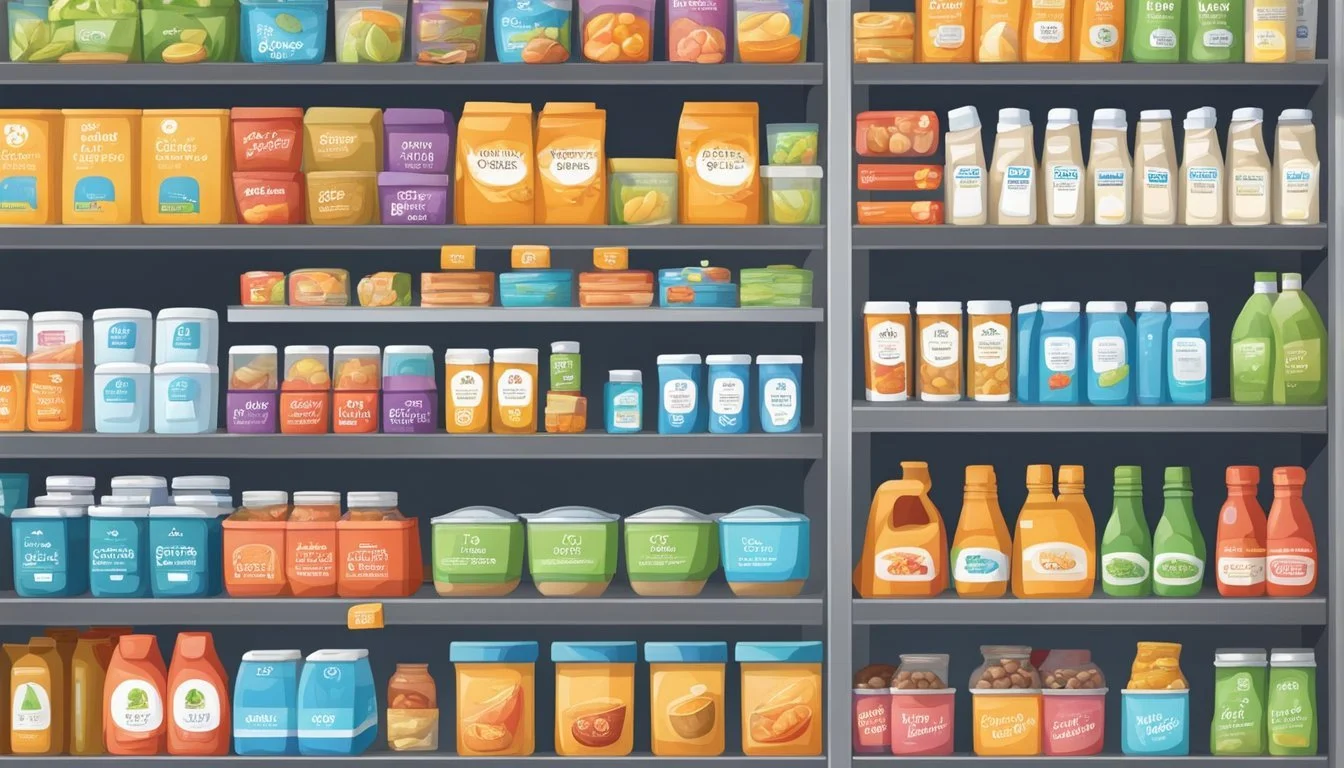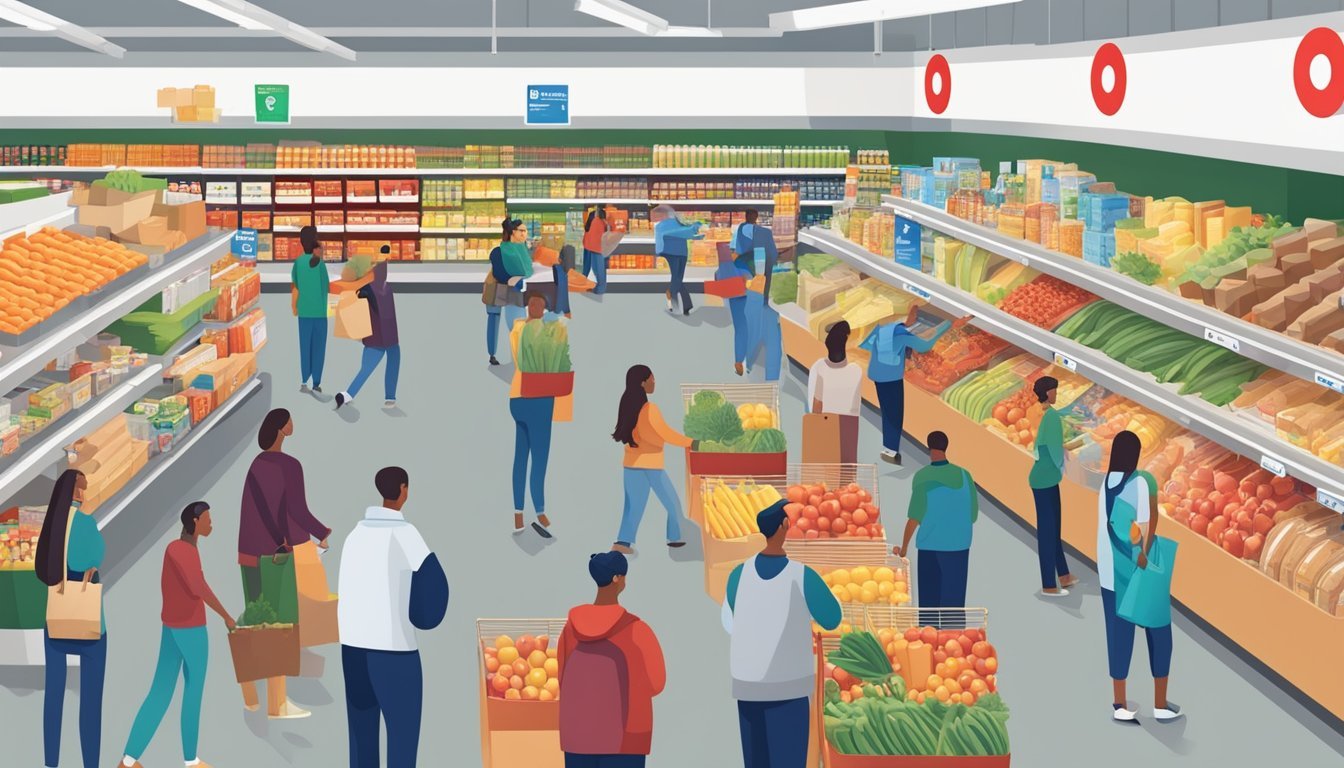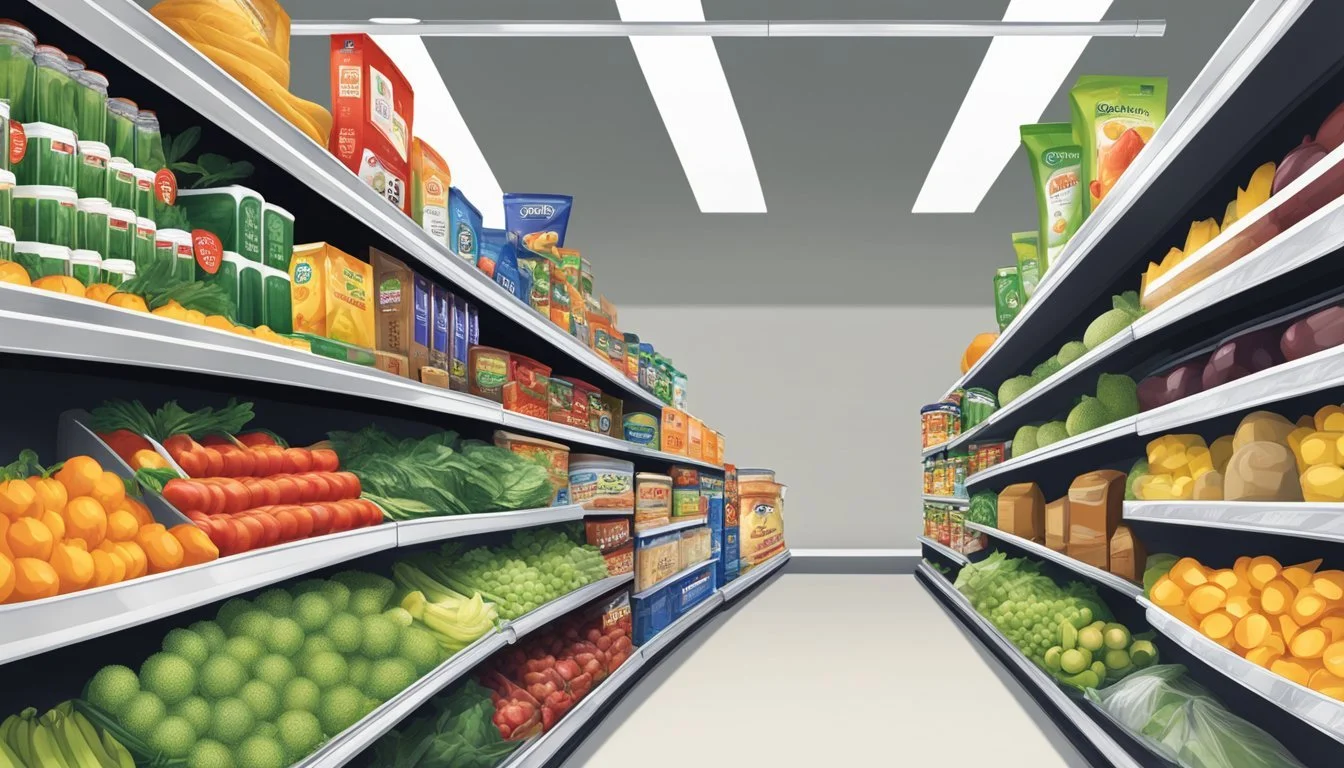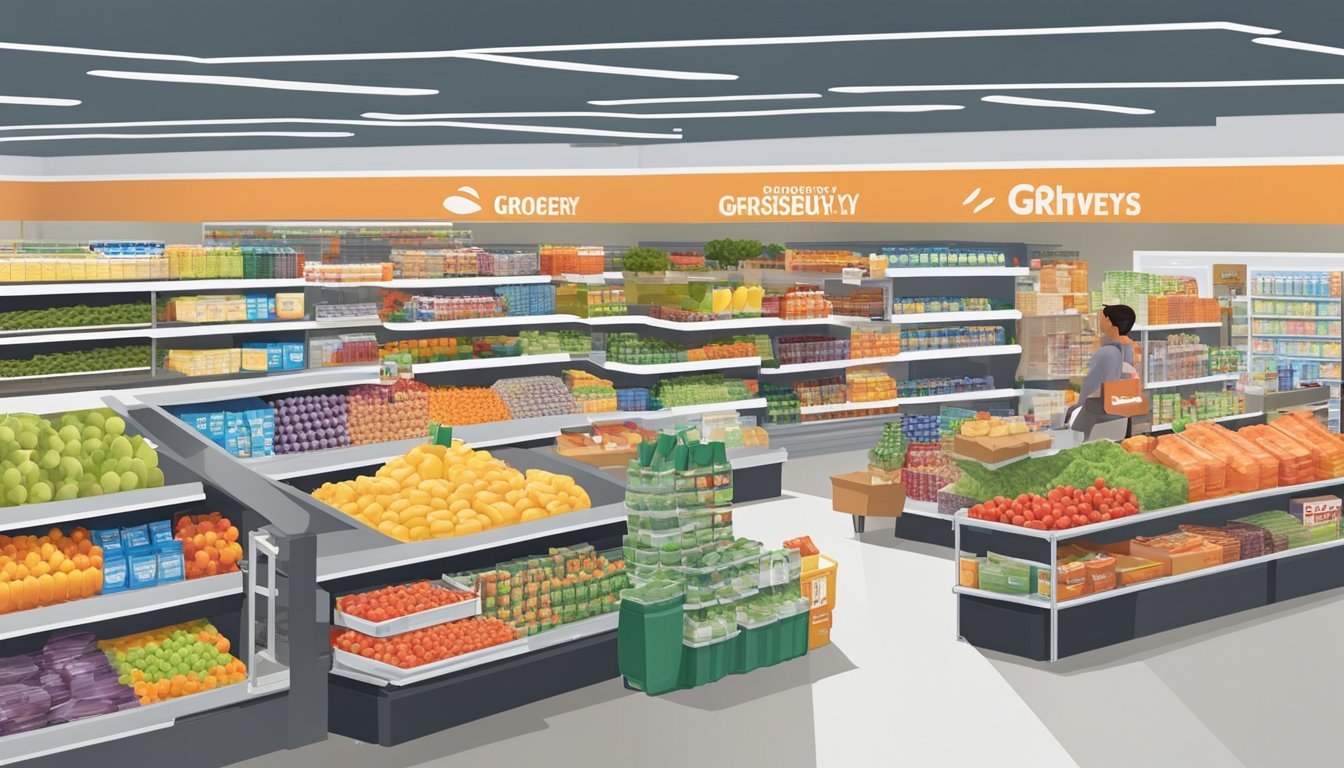Target vs Sam's Club
A Comprehensive Comparison of Prices, Selection, and Quality
Target and Sam's Club offer distinct shopping experiences for grocery buyers. While Target provides a wide range of products in a convenient retail setting, Sam's Club focuses on bulk purchases and member-exclusive deals.
For overall savings on groceries, Sam's Club typically offers lower prices due to its bulk-buying model and connection to Walmart's purchasing power. This can lead to significant cost reductions for shoppers willing to buy larger quantities. Target, however, excels in providing a more diverse selection of groceries, including many exclusive store brands.
The shopping experience differs significantly between these stores. Target's clean, organized layout and frequent promotions attract customers seeking a pleasant shopping atmosphere. Sam's Club, with its warehouse-style setup, caters to those prioritizing value and quantity over ambiance. Both stores maintain high standards for product quality, ensuring customers receive fresh groceries regardless of their choice.
Company Backgrounds
Target and Sam's Club have unique histories as major American retailers. Both emerged from larger parent companies to become prominent players in the retail landscape, though their paths and specialties differ.
History of Target and Walmart
Target Corporation traces its roots to 1902 when George Dayton founded Goodfellow Dry Goods in Minneapolis. The company rebranded as Target in 1962, focusing on discount retail. Target expanded rapidly, becoming known for its "cheap chic" image and stylish yet affordable merchandise.
Walmart began in 1962 when Sam Walton opened his first store in Rogers, Arkansas. The company grew quickly, emphasizing low prices and a wide selection. Walmart became the world's largest retailer by revenue, known for its supercenter format combining general merchandise and groceries.
Sam's Club Origins and Walmart Connection
Sam's Club launched in 1983 as a division of Walmart. Sam Walton created the warehouse club concept to serve small businesses and compete with Costco. The first Sam's Club opened in Midwest City, Oklahoma.
Sam's Club operates as a membership-only retail warehouse club. It offers bulk quantities of products at discounted prices to both businesses and individual consumers. While independent in many operations, Sam's Club remains a subsidiary of Walmart Inc.
The connection to Walmart provides Sam's Club with significant purchasing power and logistics support. This relationship allows Sam's Club to maintain competitive pricing and a broad product selection, differentiating it from traditional grocery stores like Target.
Membership Comparisons
Sam's Club and Target offer distinct membership models. Sam's Club requires paid memberships to access its warehouse deals. Target provides free shopping access with optional benefits programs.
Sam's Club Membership Options
Sam's Club offers two membership tiers. The basic Club membership costs $50 annually and grants access to all Sam's Club locations and SamsClub.com. Members receive exclusive savings on groceries, electronics, and more.
The Plus membership costs $110 per year. It includes additional perks like free shipping on most online items, earlier shopping hours, and 2% cash back on qualifying purchases (up to $500 annually). Plus members also get free curbside pickup and discounts on glasses and contact lenses.
Both tiers allow members to add one household member at no extra cost. Sam's Club frequently runs promotions offering discounted or free memberships to new sign-ups.
Target Benefits Without Membership
Target does not require a paid membership to shop in its stores or online. However, the retailer offers optional free programs with added benefits.
Target Circle is a free loyalty program. Members earn 1% cash back on qualifying purchases and receive personalized deals. The program also provides early access to certain sales and a birthday discount.
Target RedCard, available as a debit or credit card, offers 5% off most Target purchases. Cardholders enjoy free shipping on many online orders and extended return periods. The RedCard has no annual fee.
Target's same-day delivery service, Shipt, is available without a membership for a per-order fee. Customers can also opt for an annual Shipt membership for unlimited free deliveries on orders over $35.
Price Analysis
Target and Sam's Club employ different pricing strategies to attract customers. Their approaches to everyday pricing and bulk purchases can significantly impact shoppers' budgets.
Everyday Pricing Strategies
Target focuses on competitive pricing for individual items. The retailer offers frequent sales and promotions on specific products. Target's RedCard provides an additional 5% discount on most purchases.
Sam's Club uses a membership model. The annual fee grants access to lower prices across the store. Sam's Club often has lower unit prices on many items compared to traditional grocery stores.
Target's prices tend to be higher on a per-unit basis for many products. However, Target's selection of store-brand items can offer good value.
Bulk Purchases and Savings
Sam's Club excels in bulk pricing. Larger package sizes typically result in lower per-unit costs. This can lead to substantial savings for families or businesses buying in quantity.
Target offers some bulk options, but the selection is more limited. Their focus is on smaller package sizes suitable for individual households.
Sam's Club's bulk pricing can result in savings of 25% or more compared to regular retail prices. However, shoppers must consider storage space and product expiration dates.
Target's bulk savings are generally less dramatic. The store compensates with more frequent sales and promotional discounts on individual items.
Product Assortment
Target and Sam's Club offer distinct product selections tailored to their business models. Their approaches to exclusive brands and organic offerings shape the shopping experience for customers.
Exclusive Brands and Private Labels
Target's private label portfolio includes popular brands like Good & Gather for food items and Up & Up for household essentials. These exclusive lines offer quality products at competitive prices. Sam's Club features its Member's Mark brand across various categories, from groceries to furniture.
Target's private labels often focus on style and design, particularly in home goods and apparel. Sam's Club's Member's Mark emphasizes bulk quantities and value for money. Both retailers use their private labels to differentiate themselves and build customer loyalty.
Selection of Organic and Fresh Produce
Target has expanded its organic offerings in recent years, particularly through the Good & Gather Organic line. This includes a range of fruits, vegetables, dairy products, and pantry staples. The retailer aims to make organic options more accessible to mainstream shoppers.
Sam's Club provides organic choices in bulk quantities, catering to families and businesses. Their fresh produce section offers both conventional and organic options. The club store model allows for competitive pricing on perishables like meat and dairy.
Target typically has a more curated selection of fresh items, while Sam's Club excels in bulk quantities. Both stores strive to meet increasing consumer demand for healthier, organic products.
Store Experiences
Target and Sam's Club offer distinct shopping environments tailored to their customer bases. Both stores prioritize efficiency and convenience, but their layouts and checkout processes differ significantly.
Aisle Layout and Navigation
Target features wide, well-lit aisles organized by department. Signage is clear and consistent, making it easy to locate specific items. The store's layout encourages browsing, with eye-catching displays showcasing seasonal and trendy products.
Sam's Club adopts a warehouse-style layout with high shelves and bulk items. Aisles are spacious to accommodate pallets and large carts. Products are grouped by category, with staples and popular items placed strategically throughout the store.
Checkout Options and Efficiency
Target provides multiple checkout options. Self-checkout kiosks are available for quick purchases. Staffed lanes handle larger transactions. The Target app offers mobile checkout for added convenience.
Sam's Club emphasizes speed at checkout. Members can use the Scan & Go app to skip lines entirely. Self-checkout stations are equipped to handle bulk purchases. Staffed registers are available for those preferring traditional checkout.
Both stores offer curbside pickup. Target's Drive Up service allows customers to order via app and have items brought to their car. Sam's Club provides Curbside Pickup for online orders, catering to members who prefer contactless shopping.
Locations and Accessibility
Target and Sam's Club have distinct approaches to store locations and online services. This impacts how easily customers can access their products and services across different areas.
Ease of Finding a Nearby Store
Target operates over 1,800 stores across all 50 U.S. states and the District of Columbia. These stores are often found in urban and suburban areas, making them convenient for many shoppers.
Sam's Club has a smaller footprint with nearly 600 locations in 44 states and Puerto Rico. While fewer in number, Sam's Club stores are typically larger warehouse-style buildings.
Target's wider distribution means more customers can find a store within a reasonable driving distance. Sam's Club locations may require longer trips for some shoppers, especially those in rural areas.
Online Shopping and Delivery Services
Both retailers offer robust online shopping options. Target provides same-day delivery through Shipt, its own service. Customers can also use Drive Up for curbside pickup or in-store pickup for online orders.
Sam's Club offers delivery through Instacart in many areas. Members can use Club Pickup for curbside service or in-club pickup for online purchases.
Target's website and app allow non-members to shop online. Sam's Club requires a membership for most online purchases, though some items are available to non-members with a service fee.
Both stores offer wide product selections online, often with items not found in physical locations. Delivery times and fees vary by location and order size.
Customer Service and Policies
Target and Sam's Club offer distinct customer service experiences and policies. Their approaches to returns, guarantees, and member support reflect their unique business models and customer bases.
Return Policies and Guarantee
Target provides a generous 90-day return window for most items, with a full refund or exchange. Some electronics have a 30-day return period. Target RedCard holders get an extra 30 days for returns.
Sam's Club allows returns for most items with no time limit, except for electronics and appliances, which have a 90-day window. They offer a 100% satisfaction guarantee on their products and services.
Both stores accept returns without receipts, but Sam's Club can easily track purchases through membership cards. Target may limit the number of no-receipt returns per year.
Member and Customer Support
Target offers customer support through in-store assistance, phone, email, and live chat. Their team is known for being helpful and responsive.
Sam's Club provides dedicated member support services. This includes priority customer service lines, early shopping hours, and exclusive discounts for Plus members.
Both retailers have mobile apps for easy access to services and support. Sam's Club's app allows members to scan items while shopping and skip the checkout line.
Target's Guest Services desk in each store handles returns, exchanges, and general inquiries. Sam's Club has a Member Services counter for similar purposes, but with added focus on membership-related issues.
Strategic Business Moves
Target and Sam's Club employ distinct strategies to strengthen their market positions and drive growth. Both retailers focus on innovation and expansion to meet evolving customer needs.
Market Position and Competitive Advantages
Target emphasizes a differentiated shopping experience. The retailer expanded same-day services during the pandemic, allowing customers to pick up groceries, alcohol, and fresh produce in just four minutes.
This move enhanced Target's competitive edge in convenience and speed. The company's focus on customer-driven innovations has helped solidify its position as a preferred one-stop shop for many consumers.
Sam's Club leverages its membership model as a key advantage. The warehouse retailer prioritizes products and services that drive shopping trips and demonstrate membership value.
This strategy has proven effective in retaining and attracting customers. Sam's Club's comprehensive digital marketing approach, based on market research and data analysis, has also contributed to its success.
Future Growth and Expansion Plans
Target plans to open about 20 new stores and update approximately 175 existing locations in 2023. This expansion strategy aims to enhance the company's physical presence and improve the shopping experience.
Target's investments focus on fueling growth and adapting to changing consumer preferences. The retailer continues to refine its omnichannel capabilities to meet diverse shopping needs.
Sam's Club has revealed exciting growth plans as well. The company's strategy includes expanding its footprint and enhancing its digital offerings.
By prioritizing value-driven memberships and strategic product selection, Sam's Club aims to increase shopping frequency and member loyalty. This approach positions the retailer for sustained growth in the competitive grocery market.
Consumer Perspectives
Both Target and Sam's Club have cultivated loyal customer bases through their unique offerings and shopping experiences. Customer feedback and repeat business provide insights into how these retailers compare in meeting consumer needs and preferences.
Customer Testimonials and Reviews
Target receives praise for its clean, organized stores and trendy product selection. Shoppers appreciate the retailer's focus on style and design, especially in clothing and home decor. Many customers highlight Target's exclusive brands as a key draw.
Sam's Club garners positive reviews for its bulk pricing and product quality. Members often commend the value they receive, particularly on household essentials and groceries. The warehouse club's rotisserie chickens and bakery items frequently earn mentions in customer testimonials.
Both stores face some critiques. Target occasionally faces complaints about higher prices compared to other retailers. Sam's Club sometimes receives feedback about limited product variety and the necessity of buying in large quantities.
Consumer Loyalty and Repeat Business
Target's loyalty program, Target Circle, offers personalized deals and rewards, encouraging repeat visits. The retailer's mobile app enhances the shopping experience, allowing for easy price checks and contactless payments.
Sam's Club membership model inherently fosters loyalty. The annual fee incentivizes members to shop frequently to maximize their investment. The retailer's Instant Savings program and cash back on certain credit card purchases further boost member retention.
Survey data indicates high customer satisfaction for both retailers. Target scores well in customer service and store atmosphere. Sam's Club excels in perceived value and product quality. Both companies maintain strong reputations among their core customer bases.









